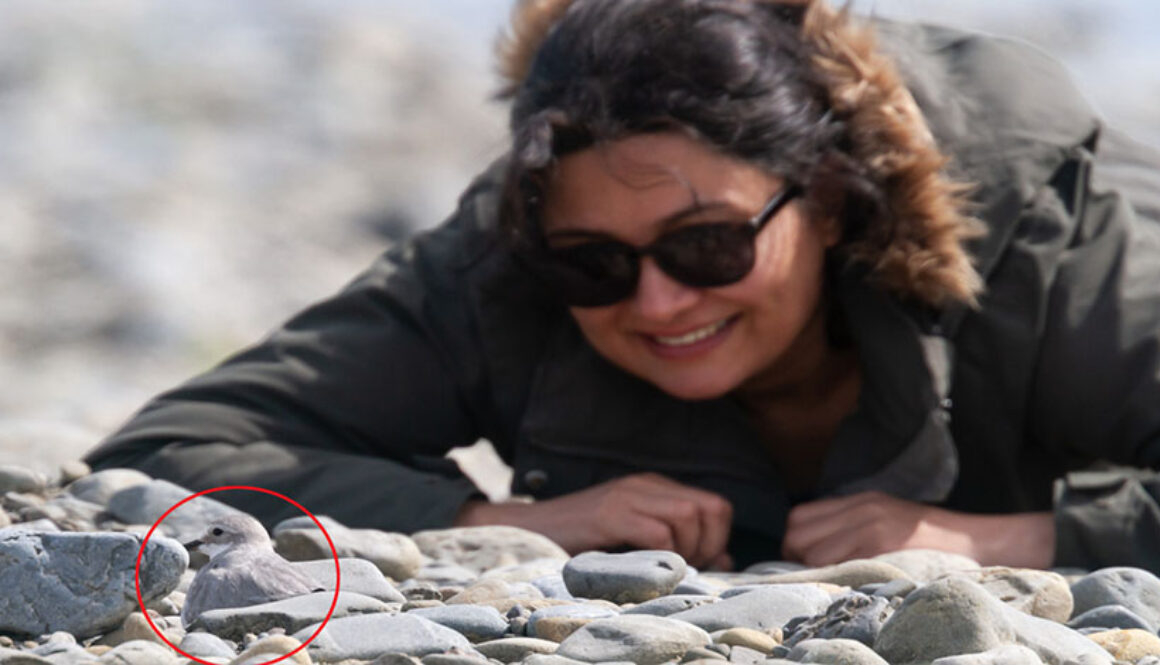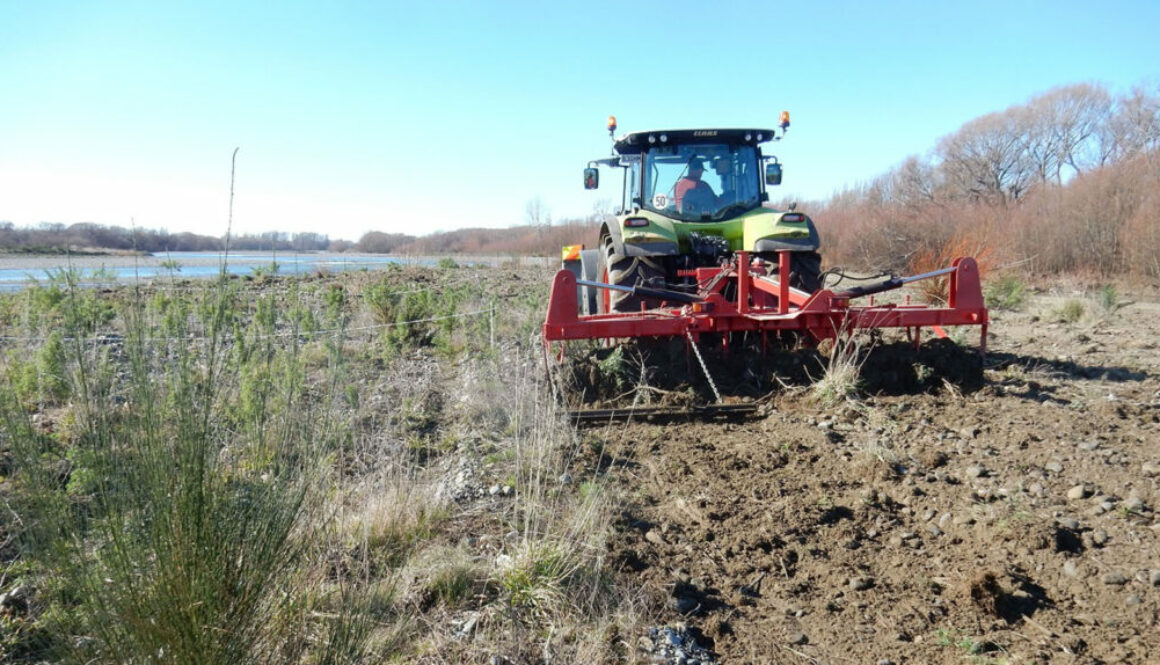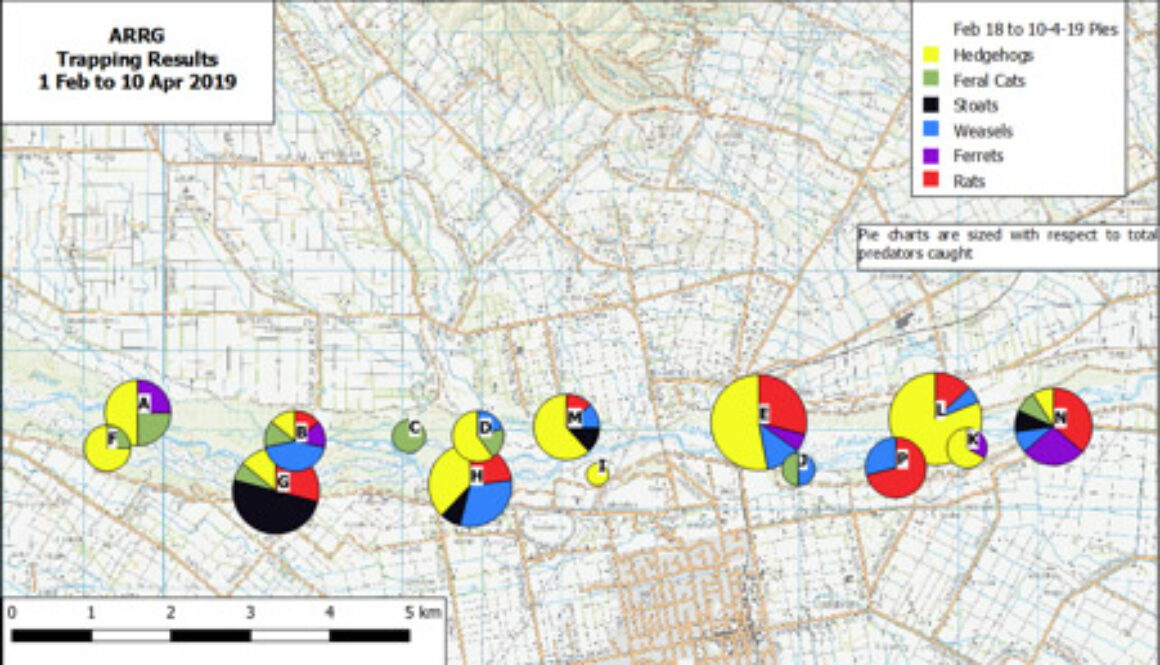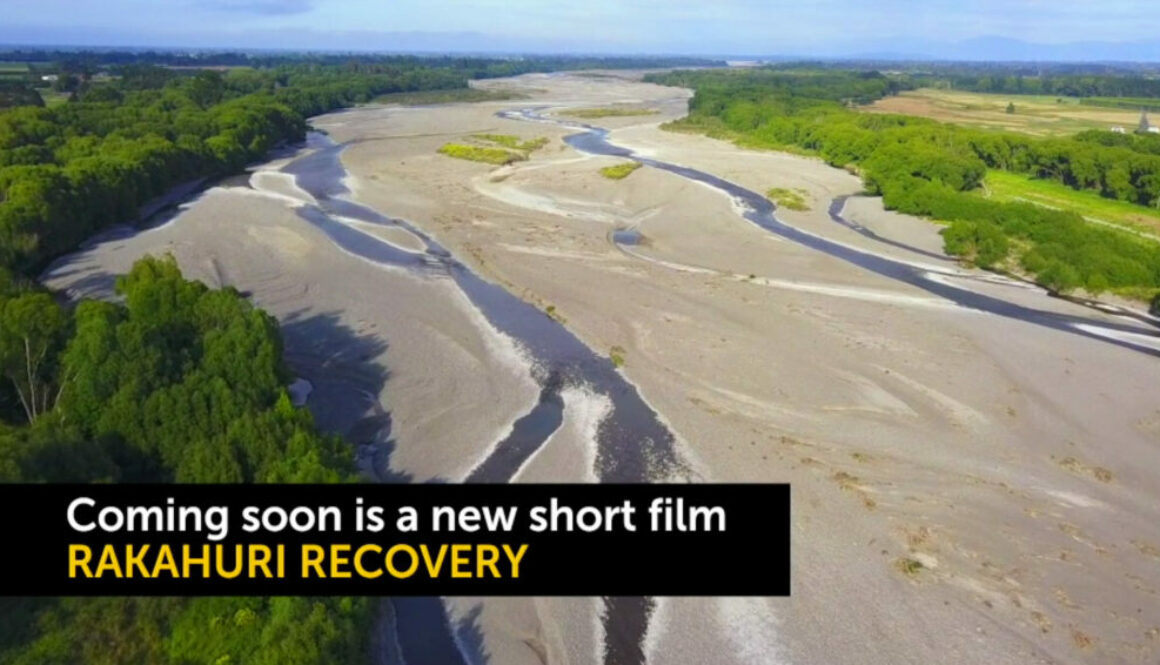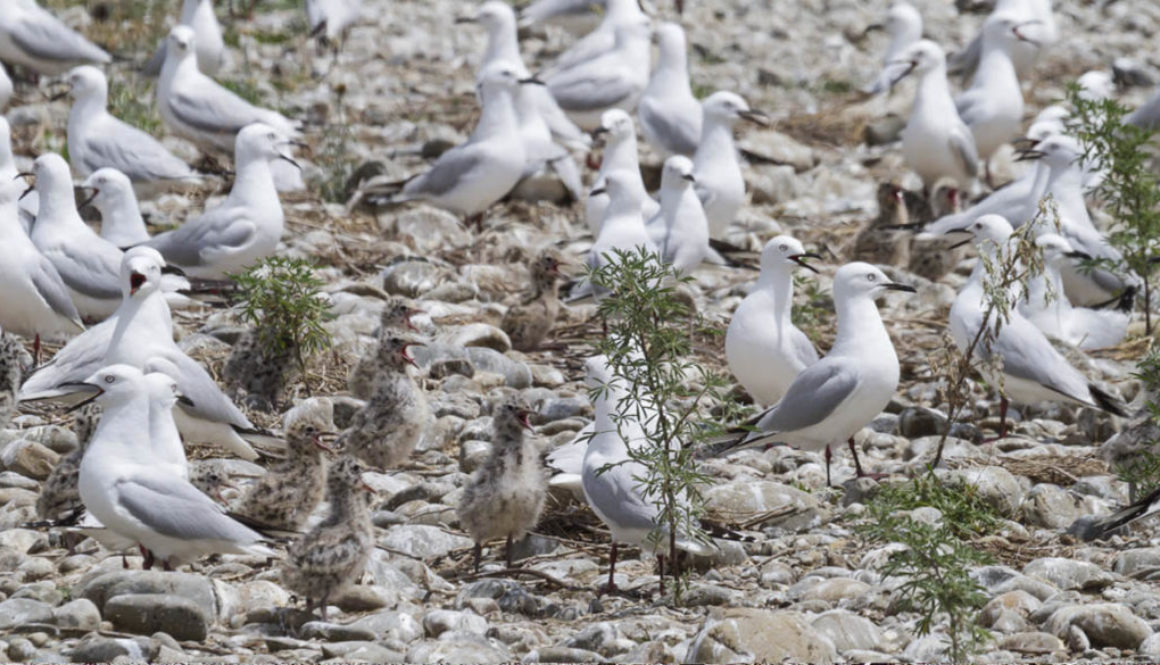Ashley Update: October 2019
Birds. It has been a slow start to the riverbed breeding season – possibly due to the persistence of cooler weather. I walk a section of the river every month and turn over rocks in the shallower braids looking for insect activity (the base of the food chain). Parts have plenty, others have virtually none (and usually fewer birds), but numbers are increasing. I reckon that there are currently 6 pairs of wrybill occupying territories on the AR, with nests found within three. Included in this lot is BW/BW, back in the usual site for his 10th season. There are other likely and historically used sites which could well get taken up in the near future. The first nesters are nearly always banded dotterels. Some nests have been found, plus young chicks seen. Oystercatchers have also been observed on nests at a few sites, but the pied stilts have been slower off the mark. Of particular interest are 100s of black-billed gulls present not far above the Cones Road bridge. Last week two Twilight Walk groups visited them – they look as if they will breed there, but no signs of nests yet. Black-fronted terns are also gathering at a few sites, with 70+ up above the aerodrome, but like the gulls, they have yet to start laying eggs.
Annual survey. Hopefully, you have already received notification about this event on Saturday, November 16. Please be at the start site in the Cones Road river bridge picnic area before 8.30 am. This will mean that we can be on the river by 9 am, and all going well, be home again by midday. Bev Alexander is taking names, so will contact people if the river/weather requires postponement.
Predators. We now have 241 traps out on the riverbed, plus another 137 around the estuary. All told, there are 28 volunteers servicing them. Over late winter the catch rate dropped considerably but is now picking up – with the first hedgehogs emerging from hibernation. Weasels are the main pest being caught currently. Trapping co-ordinator, Peter Whitehead, has organised the establishment of a central ‘supply’ depot at DoC, where trappers can get bait and other essentials. He has also made and sent around tubes for poison baits, targeting rats which were in record numbers at the end of last season. In addition to all this, we have made a number of run-through trapping tunnels, which we will deploy in a grid formation around colonies of gulls and terns.
Trap making. Geoff Swailes continues to organise sessions in his garage, including one in which students of N. Loburn school will assist as part of establishing a local ‘library’, from which traps can be borrowed by local people.
Weeds. The invasion of clear shingle by weeds (yellow lupins, grasses, gorse, broom, blackberry etc) is arguably the biggest threat to long-term successful bird breeding – as we cannot depend on large floods to keep them at bay. We don’t want to use chemicals in the riverbed, so this year we have been involved in a trial using a tractor-mounted ripper, developed by Cresslands Contracting Ltd on Tulls road. The Mark 111 version is almost there, and cleared 14 ha during August. DOC and ECan have funded this work, and hope that the result can be a cost-effective way of maintaining weed control into the future – on more than just our river.
River-bed access. From Sept 1 to the end of January, we have an agreement with ECan and the Combined 4WD Club, that 4WD access into the riverbed be restricted. To this end, in August concrete blocks and barriers were placed across the main access ways. To be sure, there will always be those who challenge such restrictions, but by and large, the barriers have been accepted and vehicle use of the riverbed is way less than it was a few years ago.
Student study. A UoC PhD student, Sanaz Safavian (from Iran), is working in association with the ripper weed trial, monitoring weed successions following control, plus the use of the sites by birds (just a few banded dotterels to date). Members of the group helped her to establish plots which are now being measured regularly. [Photo: Sanaz getting close up to a nesting wrybill. Sanaz is studying weed succession on the river, following clearance by a tractor-mounted ripper. This photo was taken by Group member, Grant Davey, who is well versed in how to take such shots with minimum disturbance to the birds involved.]
Public awareness. The Group’s profile remains high, as we continue to be involved with schools, local groups, the Ohoka market etc. Plus we gave a couple of Ppt addresses at the very successful braided river seminar held at Lincoln on June 26 (fully booked out, with over 150 present). Our 20-minute video, ‘Rakahuri Rescue’ has been well received throughout the country. Please promote its viewing as widely as you can. Then there is Karakaas Dairy Products Ltd, our one and only sponsor. Please support them (and us) by purchasing their bird-marked and very tasty products.
What can you do? Needless to say, this is a frequently asked question. And it is not easily answered, as apart from trap checking (which requires special skills), occasions down on the river where many people can be involved are few and far between. There is the half-day survey on Nov 16 (see above), but this involves less than 20 people with the right bird ID skills. In the autumn, we had some volunteer weed pulling mornings, which went well but cannot be continued into the bird breeding season. There will be more of these next year. Right now during the breeding season, we try to keep people off the river for bird disturbance reasons, but we will attempt to organise more ‘twilight’ walks to sites where the birds can be viewed from a safe distance. Anyone can, of course, attend our meetings – a notice about the next one (prior to Christmas) will be sent around in the near future. For a full record of where we have been and intend to go, have a look at our annual 2018-19 report.
Nick Ledgard, October 2019

